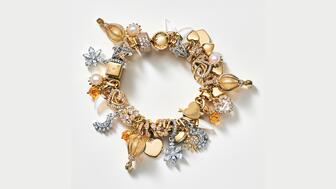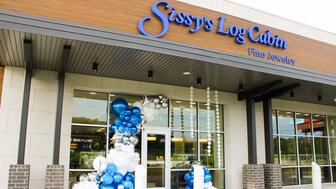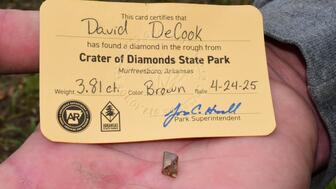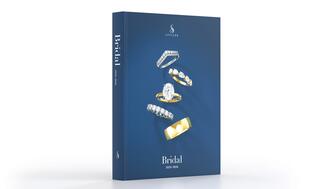Michel Desalles allegedly murdered Omid Gholian inside World of Gold N Diamond using zip ties and then fled the country.
What is your time worth?
Retailer Jim Alperin discusses how brick-and-mortar jewelry stores sometimes serve as the educational setting and in-person showroom for Internet diamond shoppers, and poses the question: Is it time for retailers to implement fees for these services?

It’s happening more often than ever before: a customer comes into the store and wants to ask about diamonds. After all, you are the local expert and there are certain things that the Internet can’t provide. The computer today has fabulous 3-D photos of engagement rings and diamonds that allow your customers to see how a ring looks from every angle. GIA certificates, which are readily available to view on the Internet, make it easy to know the exact color, clarity grade and dimensions of the diamond your customer is interested in buying. After all, once the GIA established a universal grading system for diamonds, they became in many ways a standardized commodity. Once that happened, comparing one diamond to another became much easier for the consumer.
The one thing that the computer can’t give your customer, other than the personalized service that we as brick-and-mortar retailers can, is the opportunity to try on a ring to see how it looks on their finger. It also doesn’t let the customer see how large a 1 1/2-carat diamond is compared to a 2-carat diamond. What color exactly is H, and how does it compare to an I? Only when the customer sees the stones, often next to one another, can they decide which color and size diamond they want or are willing to accept. So it seems that the role of retail jewelers is becoming more the showroom for Internet diamond web sites. We are the salesman for our biggest competitors and we don’t get paid for it!
If you think back, not that long ago, there was an uproar against the airline industry for instituting baggage fees. If you want to fly somewhere on vacation and take no clothes for a week or two then fine, pay the price of the ticket only. On the other hand, if you are like most of us, when we travel we take along more than just a toothbrush and require a suitcase. Not only is one charged to take one’s clothes but if you want to bring them home with you, you are charged a second time. What about the price of gasoline? When was the last time you heard a real protest against paying over $3 a gallon for a commodity that is needed in America, where train travel barely exists and public transportation in most cities is inefficient?
As retail jewelers, it’s time to institute a fee for our service. The first visit to the store, when one is establishing what it is that the customer is interested in, should remain a free service. It is during that visit that the retailer finds out what it is that the person is looking for.
Educating your customer about diamonds or, if you need to ship diamonds into your store for them to see, should be done for a fee. The fee should be presented as one for your professional time and shipping costs and will be applied to the purchase of a diamond from your store. If the person across the desk or counter from you is just using you to better understand their Internet purchase, then they should pay you for your time. If they plan on making a purchase from you, then the fee should be applied to that purchase. The customer loses nothing and, in fact, gains from your knowledge and ability to present live product to them, which can add up into the tens of thousands of dollars very quickly in our industry. There is value in that and it should be paid for.
At first retail jewelers will resist the idea of fees for service because we have always given away our expertise as a way of developing loyal customers. In today’s technology-driven world, where billions of dollars in diamond sales are going to the Internet, we have to consider changing our business model. Fees for services rendered need to be instituted industry wide, like the airlines did with luggage. Soon, like airline fees or $3-a-gallon gasoline, the public would expect to pay for your time and might even buy more diamonds from brick-and-mortar stores in order to recoup their initial investment in your time.
The times they are a-changin’ and it’s time we changed with them.
The Latest

Associate Editor Lauren McLemore shares her favorite looks from a night of style inspired by Black dandyism.


Sponsored by Instappraise

Gain access to the most exclusive and coveted antique pieces from trusted dealers during Las Vegas Jewelry Week.

CEO Beth Gerstein discussed the company’s bridal bestsellers, the potential impact of tariffs, and the rising price of gold.


The brand’s first independent location outside of Australia has opened in Beverly Hills, California.

Cathy Marsh will lead the jewelry company’s efforts in the upper Midwest and western United States.

Supplier Spotlight Sponsored by GIA

The company has multiple strategies for dealing with tariffs, though its CEO said moving manufacturing to the U.S. is not one of them.

Connecting with your customers throughout the year is key to a successful holiday marketing push.

Its commercial-quality emerald sale held last month totaled more than $16 million, up from about $11 million in September 2024.

National Jeweler Editor-in-Chief Michelle Graff joined Michael Burpoe to talk tariffs, consumer confidence, and the sky-high price of gold.

Designer Lauren Harwell Godfrey made the piece as an homage to the 2025 gala’s theme, “Superfine: Tailoring Black Style.”

Expanded this year to include suppliers, JA’s 2025 list honors 40 up-and-coming professionals in the jewelry industry.

Located in Fort Smith, it’s the Mid-South jeweler’s first store in Northwest Arkansas.

The episode about the family-owned jeweler will premiere May 17.

The Houston-based jeweler’s new 11,000-square-foot showroom will include a Rolex boutique.

The turquoise and diamond tiara hasn’t been on the market since it was purchased by Lord Astor in 1930.

“The Duke Diamond” is the largest diamond registered at the Arkansas park so far this year.

The childhood craft of making dried pasta necklaces for Mother’s Day is all grown up as the 14-karat gold “Forever Macaroni” necklace.

Set with May’s birthstone and featuring an earthworm, this ring is a perfect celebration of spring.

“Bridal 2025–2026” includes popular styles and a dedicated section for quick pricing references of lab-grown diamond bridal jewelry.

Though currently paused, high tariffs threaten many countries where gemstones are mined. Dealers are taking measures now to prepare.

Located in Miami’s Design District, the 4,000-square-foot store is an homage to David and Sybil Yurman’s artistic roots.

May babies are lucky indeed, born in a month awash with fresh colors and celebrated with one of the most coveted colored gemstones.

The deadline to apply for the Seymour & Evelyn Holtzman Bench Scholarship is June 12.

What’s really worrying U.S. consumers isn’t the present situation; it’s what the economy is going to look like six months from now.



























